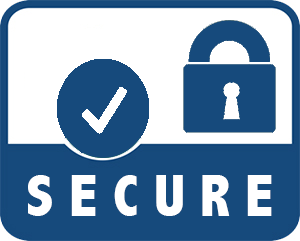
Yale Locks & Hardware
nexTouch Sectional Mortise Touch Screen Keypad Lock no cylinder, with deadbolt
SKU: NTM645-ZW2


Quickstart
This is a
1. Enter the 4-8 digit master PIN code followed by the gear key.2. Press the 7 key followed by the gear key.3. Press the 1 key followed by the gear key.
Important safety information
Please read this manual carefully. Failure to follow the recommendations in this manual may be dangerous or may violate the law. The manufacturer, importer, distributor and seller shall not be liable for any loss or damage resulting from failure to comply with the instructions in this manual or any other material. Use this equipment only for its intended purpose. Follow the disposal instructions. Do not dispose of electronic equipment or batteries in a fire or near open heat sources.What is Z-Wave?
Z-Wave is the international wireless protocol for communication in the Smart Home. This device is suited for use in the region mentioned in the Quickstart section.
Z-Wave ensures a reliable communication by reconfirming every message (two-way communication) and every mains powered node can act as a repeater for other nodes (meshed network) in case the receiver is not in direct wireless range of the transmitter.
This device and every other certified Z-Wave device can be used together with any other certified Z-Wave device regardless of brand and origin as long as both are suited for the same frequency range.
If a device supports secure communication it will communicate with other devices secure as long as this device provides the same or a higher level of security. Otherwise it will automatically turn into a lower level of security to maintain backward compatibility.
For more information about Z-Wave technology, devices, white papers etc. please refer to www.z-wave.info.
Product Description
Expanding the Yale nexTouch product line for even more applications, the new nexTouch Sectional Mortise Keypad Lock provides robust security for a wide range of commercial and multi-family buildings. Just like the original cylindrical nexTouch lock, it is ANSI/BHMA Grade 1 certified and offered in capacitive touchscreen or pushbutton keypad versions. With just the addition of a Z-Wave Plus module, you can add this lock to compatible smart home and alarm systems. Other standard features include voice-guided programming, privacy mode with Door Position Switch, 9V battery backup, support of up to 100 unique user codes, and more.
Prepare for Installation / Reset
Please read the user manual before installing the product.
In order to include (add) a Z-Wave device to a network it must be in factory default state. Please make sure to reset the device into factory default. You can do this by performing an Exclusion operation as described below in the manual. Every Z-Wave controller is able to perform this operation however it is recommended to use the primary controller of the previous network to make sure the very device is excluded properly from this network.
Reset to factory default
This device also allows to be reset without any involvement of a Z-Wave controller. This procedure should only be used when the primary controller is inoperable.
Please use this procedure only when the network primary controller is missing or otherwise inoperable.1. Remove the inside lever with the lever removal tool.2. Remove battery cover using hex wrench provided with lock.3. Remove four (4) AA batteries.4. Remove the 10-32 x 3/4" pan head screw from the center of the battery housing into the barrel nut of the outside assembly.5. Remove inside escutcheon. Cables may stay connected.6. Reinstall batteries 7. On the back of the PC board, push and hold the Reset Button with the lever removal tool for 3 seconds.8. While continuing the press the reset button, temporarily remove one AA battery.9. Reinstall the battery10. Release reset button and wait 15 seconds. Speaker will announce "Welcome to Yale"11. Reassemble escutcheon
Inclusion/Exclusion
On factory default the device does not belong to any Z-Wave network. The device needs to be added to an existing wireless network to communicate with the devices of this network. This process is called Inclusion.
Devices can also be removed from a network. This process is called Exclusion. Both processes are initiated by the primary controller of the Z-Wave network. This controller is turned into exclusion respective inclusion mode. Inclusion and Exclusion is then performed doing a special manual action right on the device.
Inclusion
1. Enter the 4-8 digit master PIN code followed by the gear key.2. Press the 7 key followed by the gear key.3. Press the 1 key followed by the gear key.Exclusion
1. Enter the 4-8 digit master PIN code followed by the gear key.2. Press the 7 key followed by the gear key.3. Press the 3 key followed by the gear key.Communication to a Sleeping device (Wakeup)
This device is battery operated and turned into deep sleep state most of the time to save battery life time. Communication with the device is limited. In order to communicate with the device, a static controller C is needed in the network. This controller will maintain a mailbox for the battery operated devices and store commands that can not be received during deep sleep state. Without such a controller, communication may become impossible and/or the battery life time is significantly decreased.
This device will wakeup regularly and announce the wakeup state by sending out a so called Wakeup Notification. The controller can then empty the mailbox. Therefore, the device needs to be configured with the desired wakeup interval and the node ID of the controller. If the device was included by a static controller this controller will usually perform all necessary configurations. The wakeup interval is a tradeoff between maximal battery life time and the desired responses of the device. To wakeup the device please perform the following action: Touch the touchscreen with three fingers
Quick trouble shooting
Here are a few hints for network installation if things dont work as expected.
- Make sure a device is in factory reset state before including. In doubt exclude before include.
- If inclusion still fails, check if both devices use the same frequency.
- Remove all dead devices from associations. Otherwise you will see severe delays.
- Never use sleeping battery devices without a central controller.
- Dont poll FLIRS devices.
- Make sure to have enough mains powered device to benefit from the meshing
Association - one device controls an other device
Z-Wave devices control other Z-Wave devices. The relationship between one device controlling another device is called association. In order to control a different device, the controlling device needs to maintain a list of devices that will receive controlling commands. These lists are called association groups and they are always related to certain events (e.g. button pressed, sensor triggers, ...). In case the event happens all devices stored in the respective association group will receive the same wireless command wireless command, typically a 'Basic Set' Command.
Association Groups:
| Group Number | Maximum Nodes | Description |
|---|---|---|
| 1 | 5 | Z-Wave Plus Lifeline |
Configuration Parameters
Z-Wave products are supposed to work out of the box after inclusion, however certain configuration can adapt the function better to user needs or unlock further enhanced features.
IMPORTANT: Controllers may only allow configuring signed values. In order to set values in the range 128 ... 255 the value sent in the application shall be the desired value minus 256. For example: To set a parameter to 200 it may be needed to set a value of 200 minus 256 = minus 56. In case of a two byte value the same logic applies: Values greater than 32768 may needed to be given as negative values too.
Parameter 1: Silent Mode on/off
Level control, 1, 2, 3 default is 1. Levels are 1 and 3 for models with no spoken prompts default is 1 or high Size: 1 Byte, Default Value: 1
| Setting | Description |
|---|---|
| 1 - 3 | Level |
Parameter 11: One Touch Locking
0x00 = OFF, 0xFF = ON default is 0xFF or ON. Size: 1 Byte, Default Value: 0
| Setting | Description |
|---|---|
| -128 | One Touch Locking On |
| 0 | One Touch Locking Off |
Parameter 12: Privacy Button
0x00 = OFF, 0xFF = ON default is 0x00 or OFF Size: 1 Byte, Default Value: 0
| Setting | Description |
|---|---|
| -128 | Privacy Button On |
| 0 | Privacy Button Off |
Parameter 15: Reset to Factory Defaults
01 = Lock will execute Reset To Factory.02 = Reserved for future use (Lock will currently execute Reset To Factory same as 01). No default valuePlease use this procedure only when the network primary controller is missing or otherwise inoperable Size: 1 Byte, Default Value: 0
| Setting | Description |
|---|---|
| -128 | Reset to Factory On |
| 0 | Reset to Factory Off |
Parameter 18: Door Propped Timer
10 to 127 second.This value is represented as seconds X 10. (ie a value of 4 would mean a door propped timer of 40 seconds) Set to 0x00 to disable Door Propped Alarm.Default = 0x00 (off) Size: 1 Byte, Default Value: 0
| Setting | Description |
|---|---|
| 20 - 127 | Seconds |
Parameter 19: DPS Alarm
0x00 = OFF, 0xFF = ON Default is 0x00 or off.Used to enable/disable door condition alarms for locks that support a door position sensor.Any lock that does not support DPS will always report 0x00. Size: 1 Byte, Default Value: 0
| Setting | Description |
|---|---|
| -128 | DPS Alarm On |
| 0 | DPS Alarm Off |
Parameter 2: Auto Relock On/Off
0x00 = OFF, 0xFF = ON default is 0x00 or OFF Size: 1 Byte, Default Value: 0
| Setting | Description |
|---|---|
| -128 | Auto Relock On |
| 0 | Auto Relock Off |
Parameter 20: Deadbolt Installed
0x00 = NO deadbolt , 0xFF = YES deadboltRead only parameter.Some locks contain optional deadbolt hardware.This parameter is used to determine if one is installed. Size: 1 Byte, Default Value: 0
| Setting | Description |
|---|---|
| -128 | Deadbolt No |
| 0 | Deadbolt Yes |
Parameter 21: Eco Mode On/Off
0x00 = OFF, 0xFF = ON default is 0x00 or OFFIf supported switches lock to lower power mode of operation with reduced sound and led brightness. Size: 1 Byte, Default Value: 0
| Setting | Description |
|---|---|
| -128 | Eco Mode On |
| 0 | Eco Mode Off |
Parameter 22: Privacy Mode with Deadbolt
0x00 = OFF, 0xFF = ON default is 0x00 or OFFIf enabled then extending the deadbolt will put the lock into Privacy Mode. Size: 1 Byte, Default Value: 0
| Setting | Description |
|---|---|
| -128 | Privacy Mode On |
| 0 | Privacy Mode Off |
Parameter 23: Lock Body Alarms Mask
Each bit controls one alarm. 1 = alarm enabled, 0 = alarm disabled.0xFF = All Alarms on, Default is 0xFF.Bit 0: DPS Alarm (AX) (Duplicate of parameter 19. Values should be tied together)Bit 1: Deadbolt Alarm Bit 2: Lever Rotated (Rx) Size: 1 Byte, Default Value: 0
| Setting | Description |
|---|---|
| 0 | DPS Alarm |
| 1 | Deadbolt Alarm |
| 2 | Lever Rotated |
Parameter 3: Auto Relock Time
10 to 127 seconds default is 5 seconds Size: 1 Byte, Default Value: 5
| Setting | Description |
|---|---|
| 10 - 127 | Seconds |
Parameter 4: Wrong Code Entry Limit
3 to 10 default is 5 times Size: 1 Byte, Default Value: 5
| Setting | Description |
|---|---|
| 3 - 10 | Times |
Parameter 5: Language
Set the lock language. Default is 1= English Size: 1 Byte, Default Value: 1
| Setting | Description |
|---|---|
| 1 | English Language |
| 2 | Spanish Language |
| 3 | French Language |
Parameter 7: Shut Down Time (after wrong code entries)
10 to 127 seconds default is 60 seconds Size: 1 Byte, Default Value: 60
| Setting | Description |
|---|---|
| 10 - 127 | Seconds |
Parameter 8: Operating Mode
This sets the operating mode for the lock. Size: 1 Byte, Default Value: 0
| Setting | Description |
|---|---|
| 0 | Normal Mode (Default) |
| 1 | Vacation Mode (Keypad Locked Out) |
| 2 | Privacy Mode (Keypad Locked, RF Unlock Functional) |
Technical Data
| Hardware Platform | ZM5101 |
| Device Type | Door Lock - Keypad |
| Network Operation | Listening Sleeping Slave |
| Firmware Version | HW: 255 FW: 1.78:22.00 |
| Z-Wave Version | 6.51.07 |
| Certification ID | ZC10-18066161 |
| Z-Wave Product Id | 0x0129.0x8008.0x0A00 |
| Outdoor Use | ok |
| Door Lock Type | Lever Handle |
| Firmware Updatable | Updatable by Consumer by RF |
| IP (Ingress Protection) Rated | ok |
| Supported Notification Types | Access ControlPower Management |
| Frequency | XXfrequency |
| Maximum transmission power | XXantenna |
Supported Command Classes
- Association Grp Info
- Association V2
- Battery
- Configuration
- Device Reset Locally
- Door Lock Logging
- Door Lock V2
- Firmware Update Md V3
- Manufacturer Specific V2
- Notification V4
- Powerlevel
- Schedule Entry Lock V3
- Security
- Time Parameters
- Time V2
- User Code
- Version V2
- Zwaveplus Info V2
Explanation of Z-Wave specific terms
- Controller — is a Z-Wave device with capabilities to manage the network. Controllers are typically Gateways,Remote Controls or battery operated wall controllers.
- Slave — is a Z-Wave device without capabilities to manage the network. Slaves can be sensors, actuators and even remote controls.
- Primary Controller — is the central organizer of the network. It must be a controller. There can be only one primary controller in a Z-Wave network.
- Inclusion — is the process of adding new Z-Wave devices into a network.
- Exclusion — is the process of removing Z-Wave devices from the network.
- Association — is a control relationship between a controlling device and a controlled device.
- Wakeup Notification — is a special wireless message issued by a Z-Wave device to announces that is able to communicate.
- Node Information Frame — is a special wireless message issued by a Z-Wave device to announce its capabilities and functions.